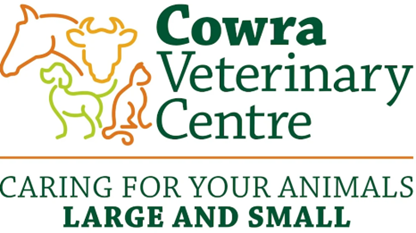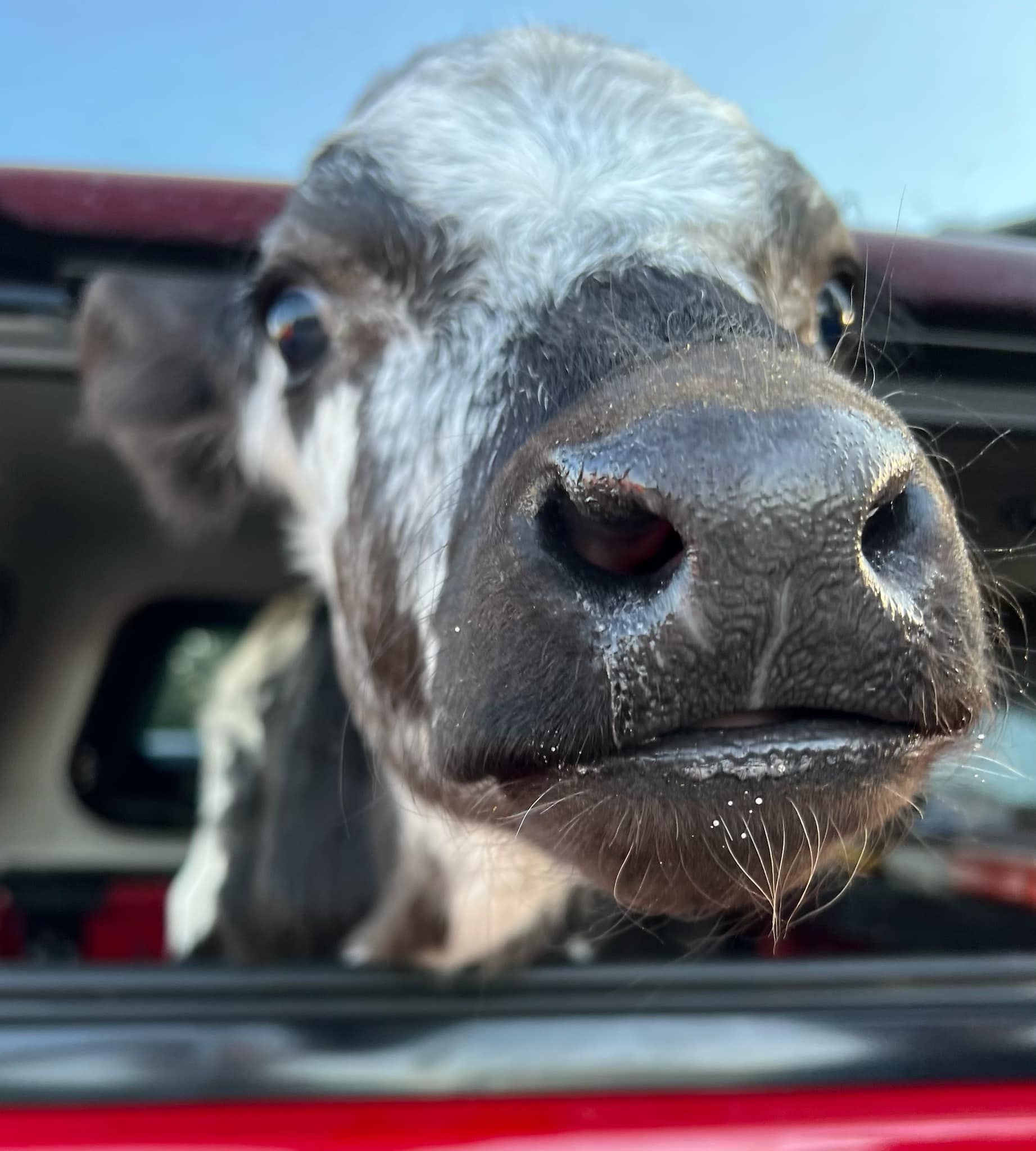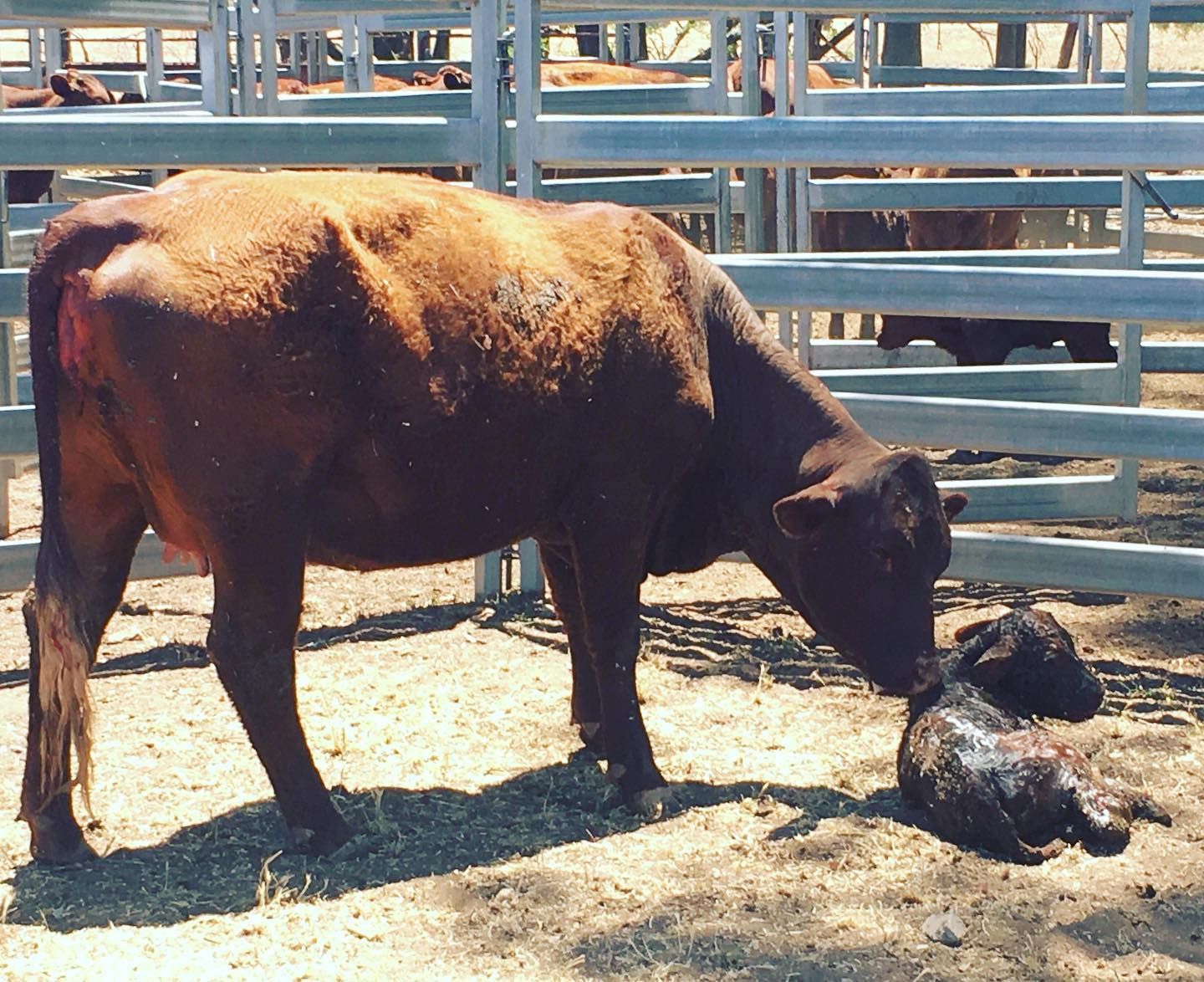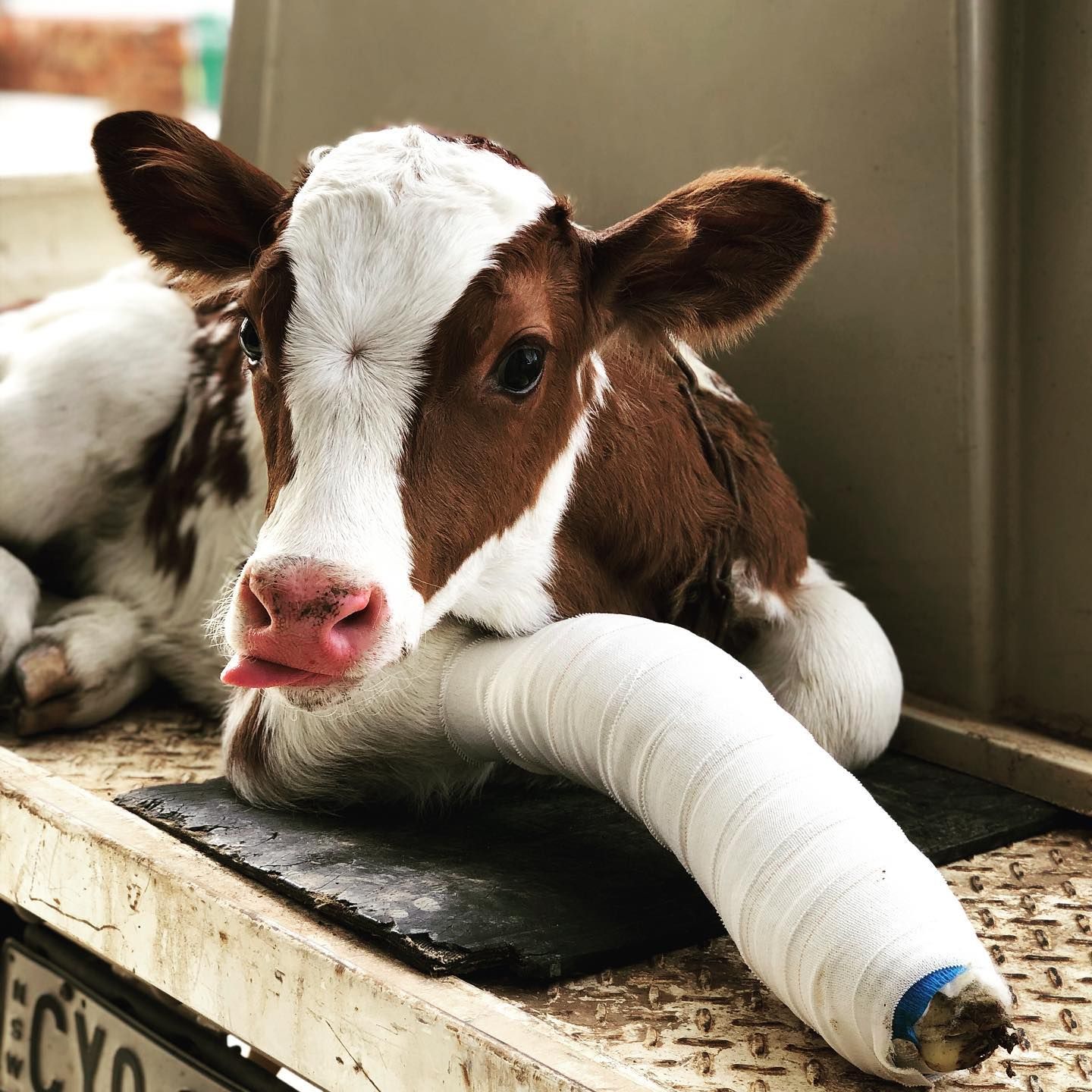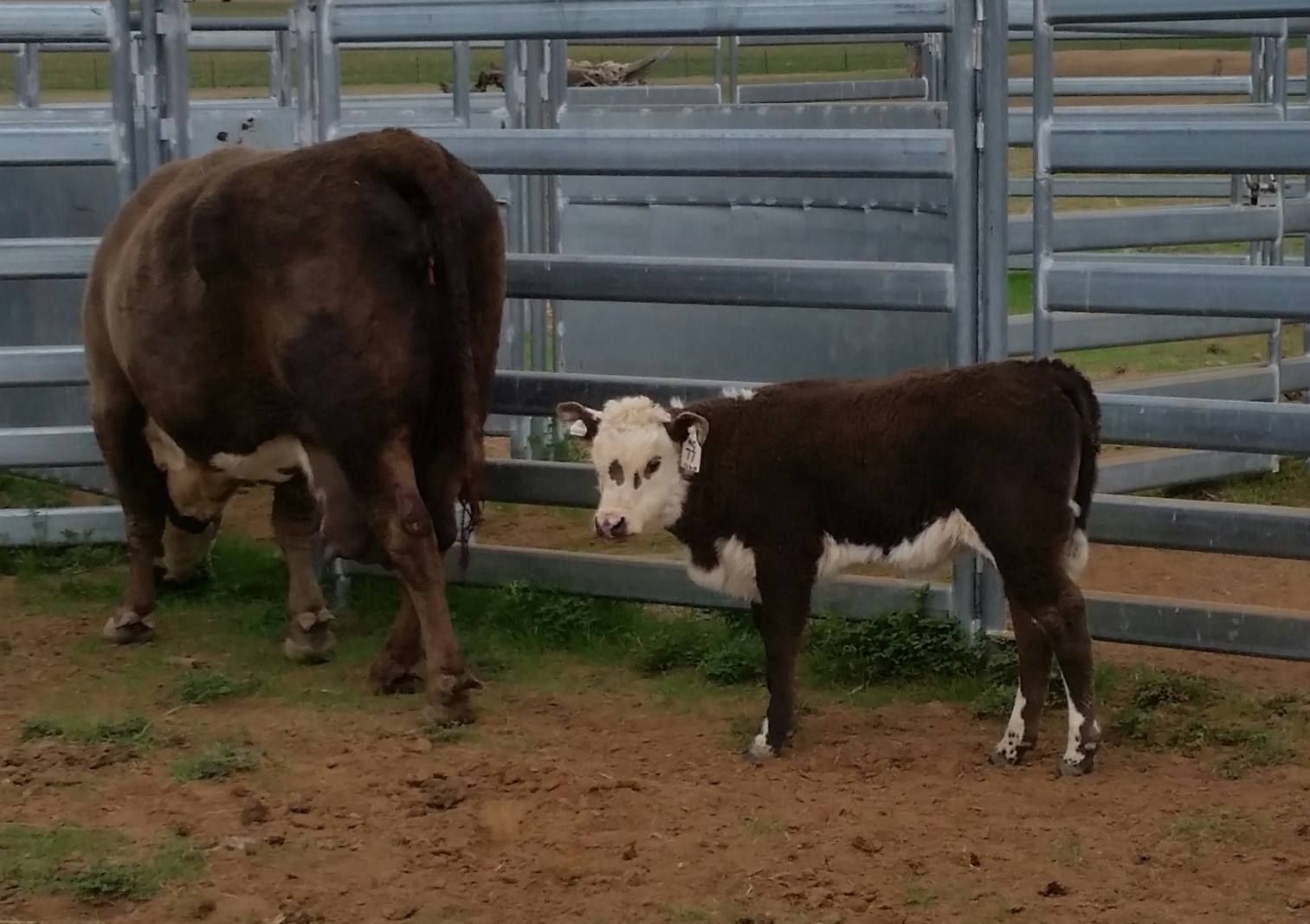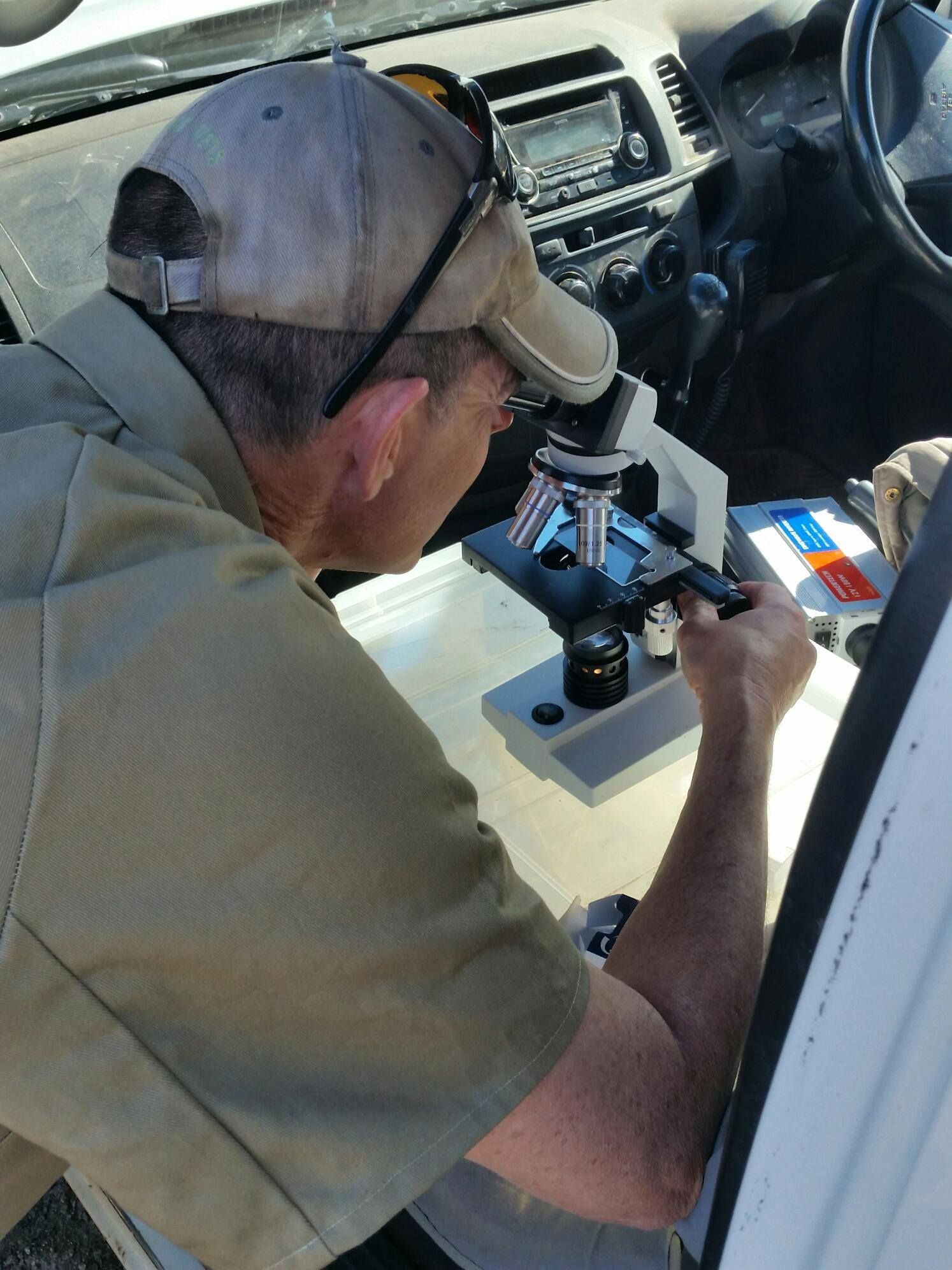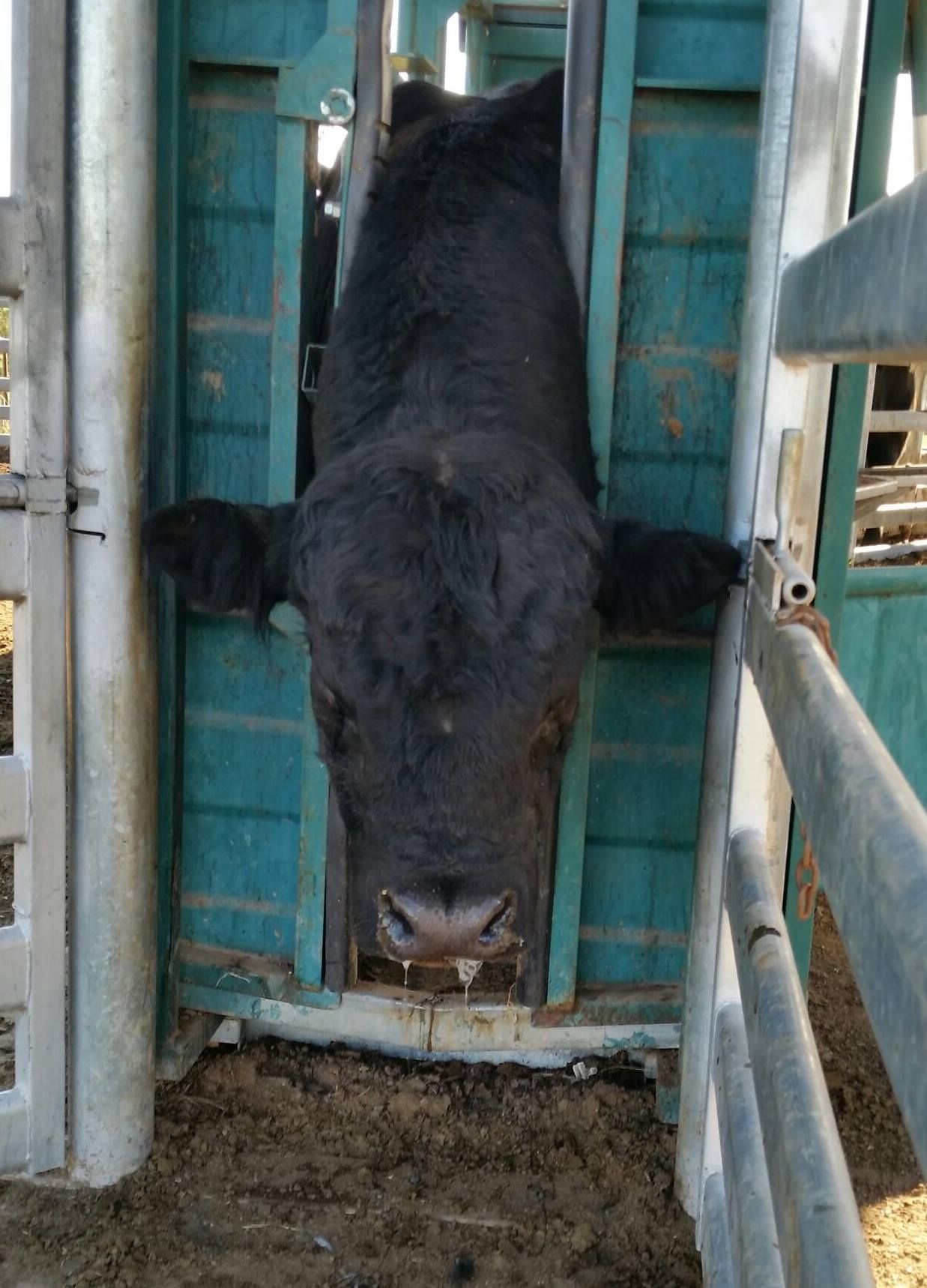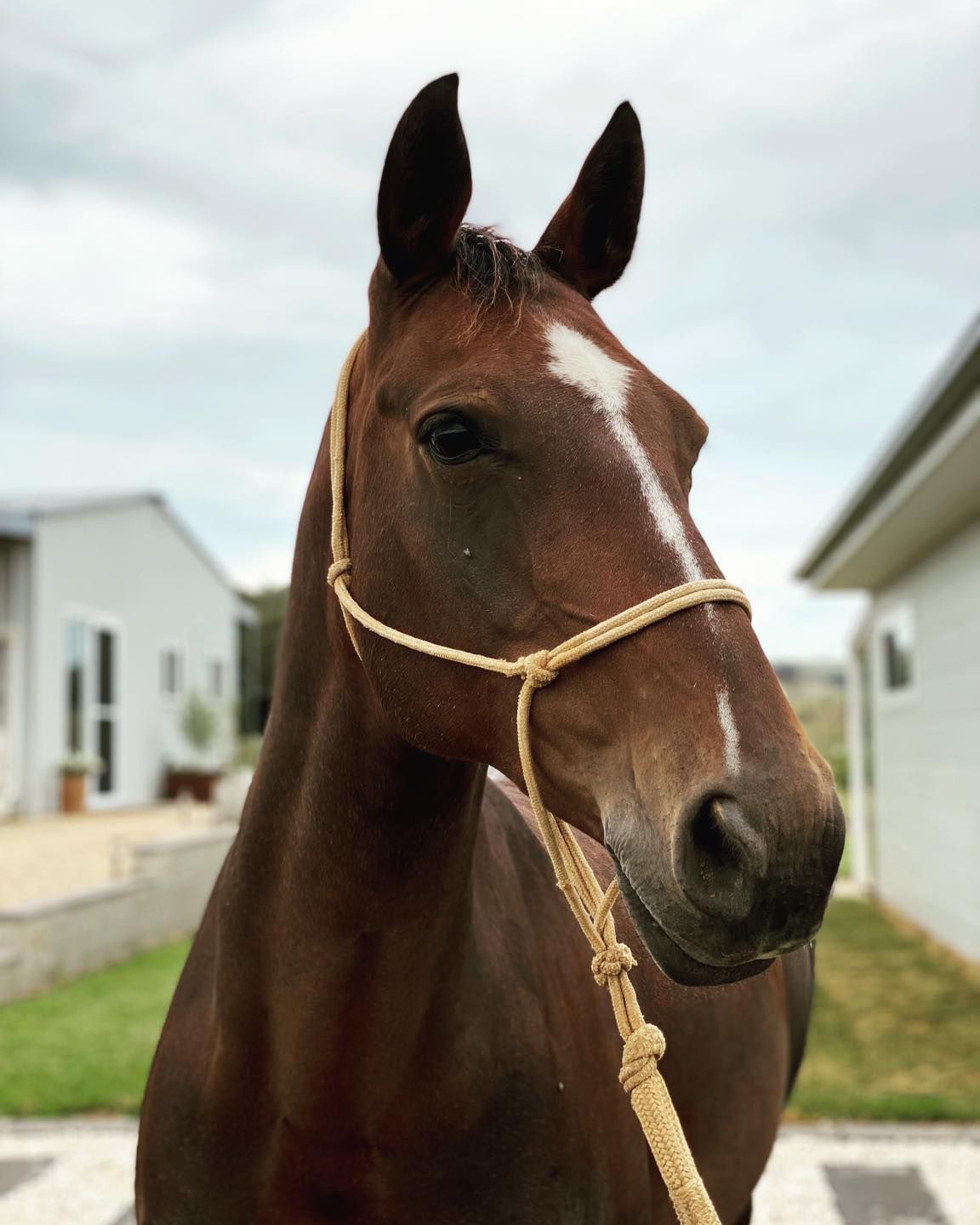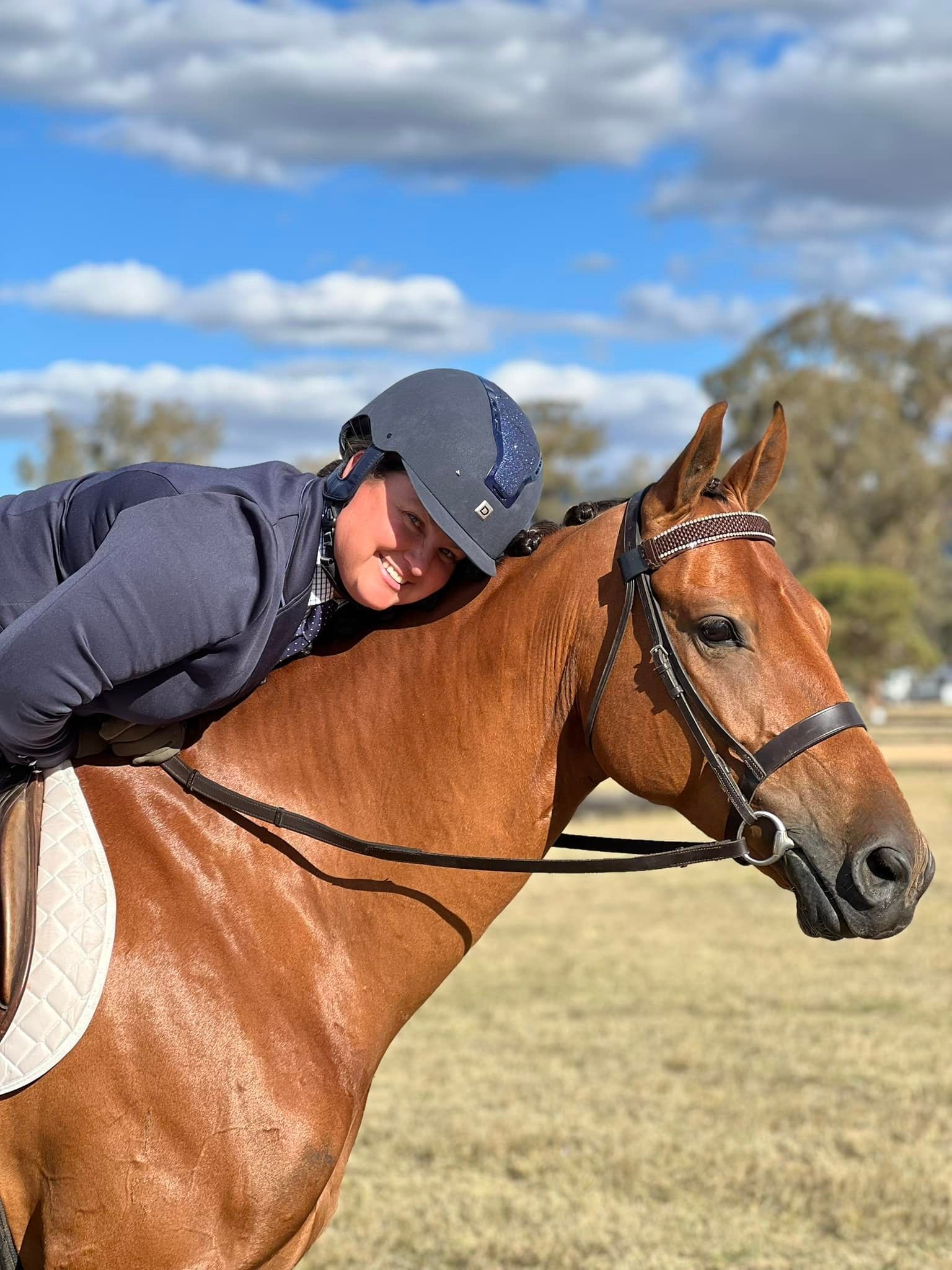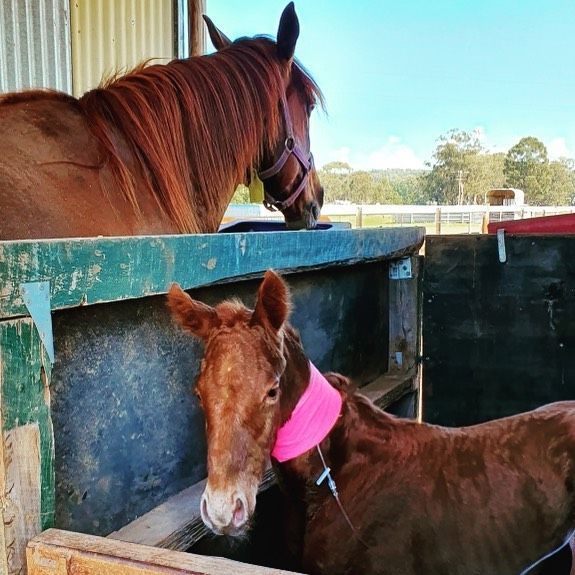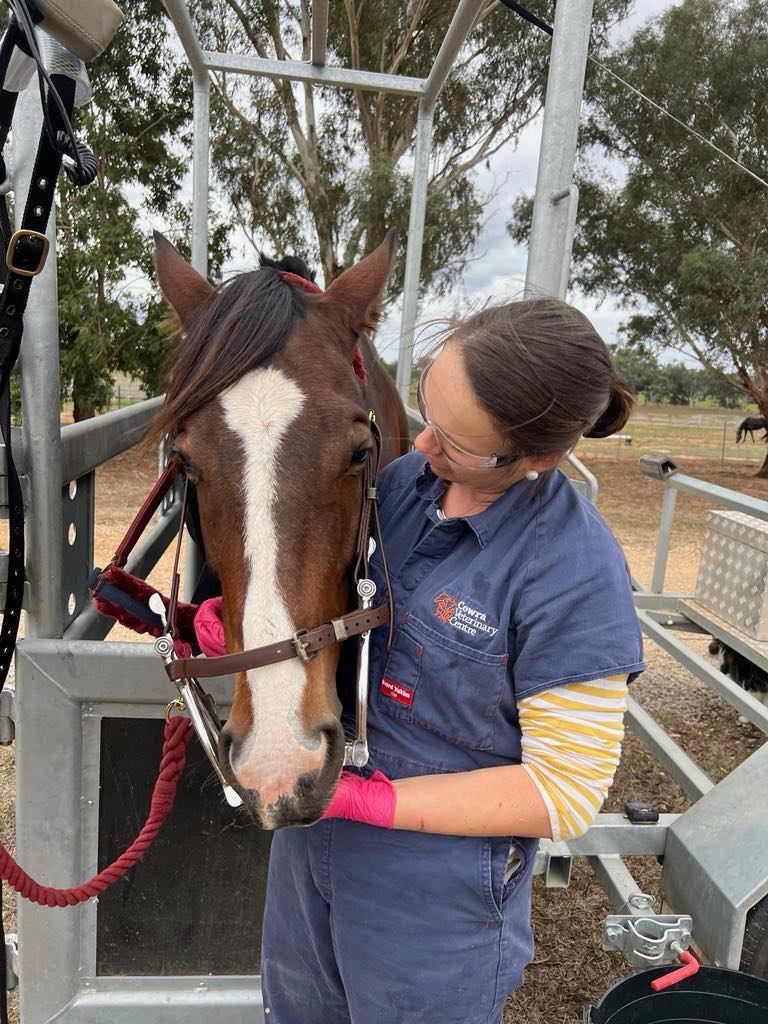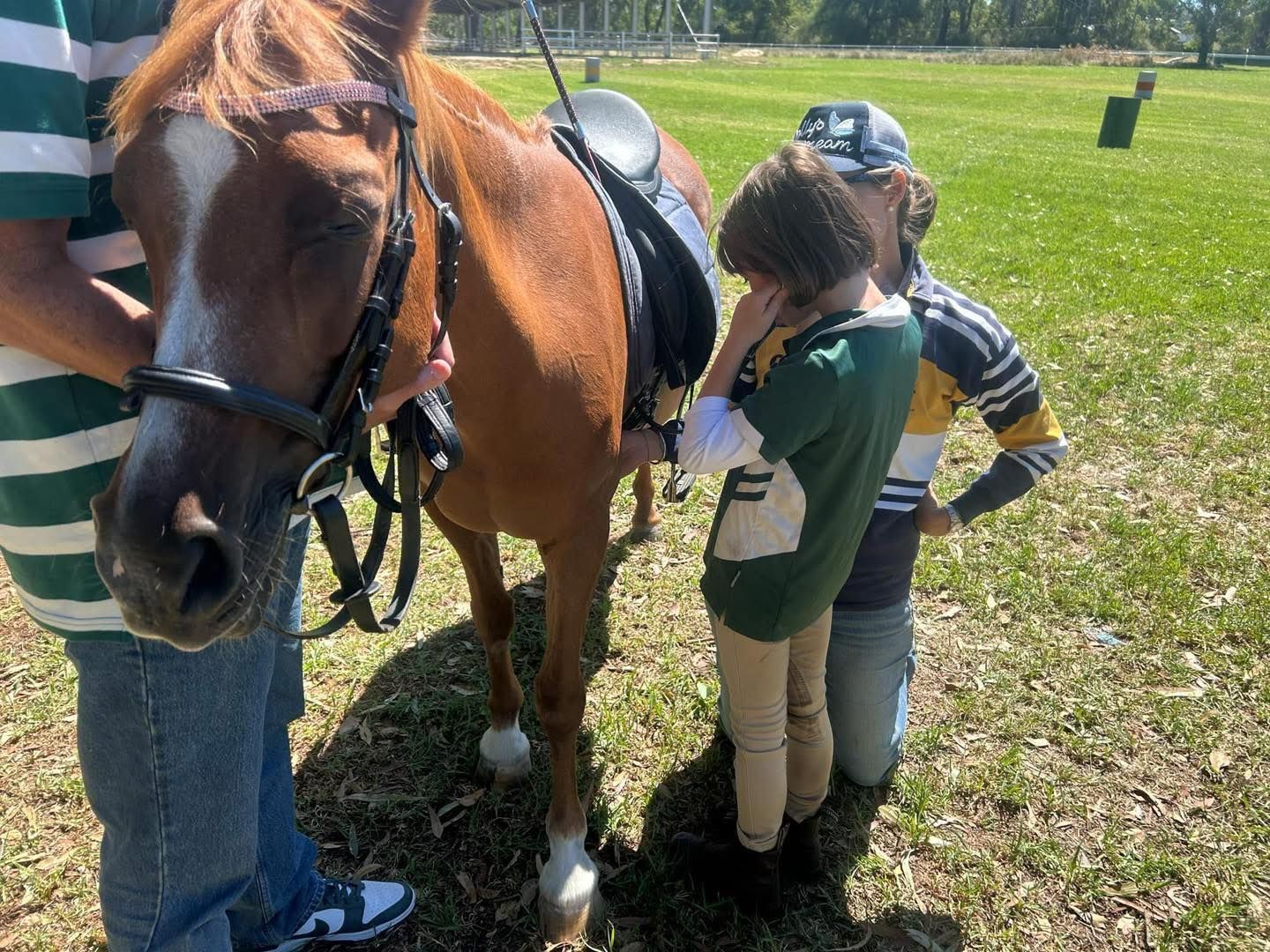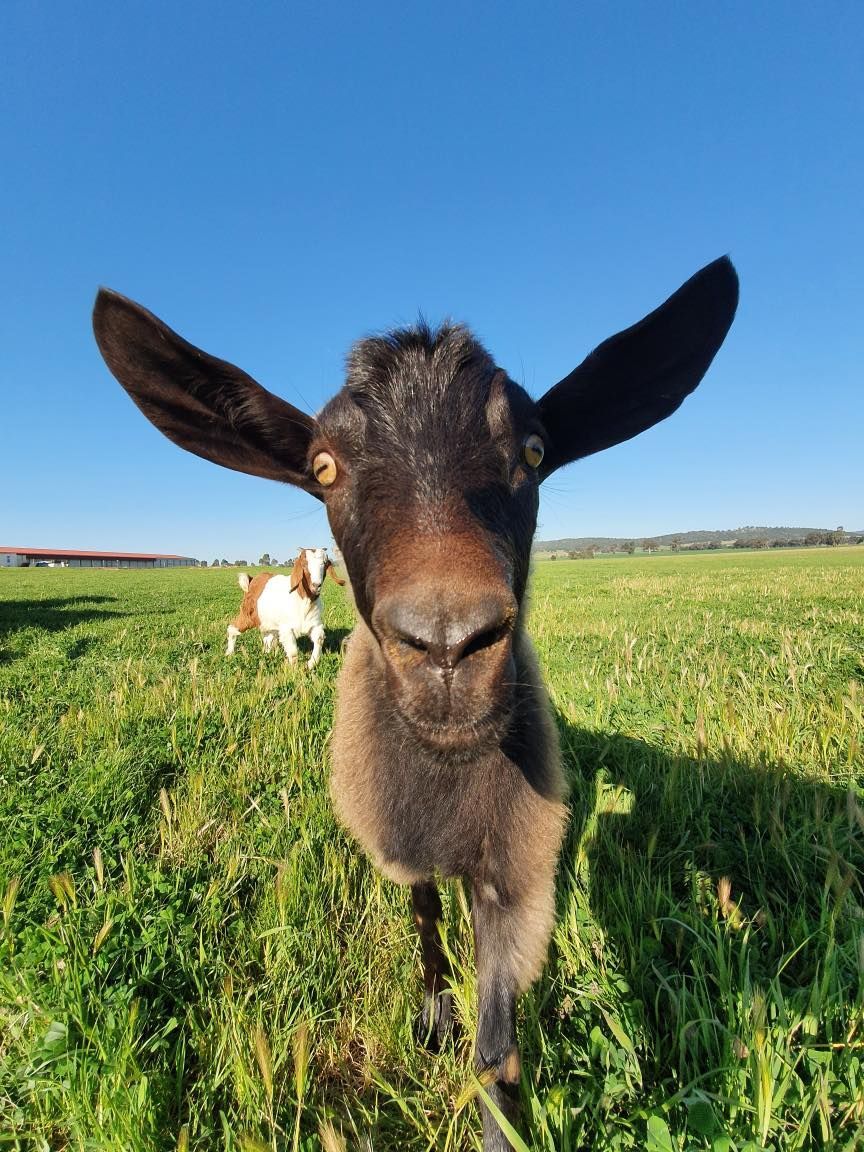Cattle Care
To ensure that the cattle you produce on your land are top quality, we need to ensure that they are healthy. At Cowra Vet Centre we look after all cattle veterinary services, including:
Obstetrics/Calvings
The most common reason we are called out to see cattle is for calving problems, especially in first-calf heifers. Calving problems can happen in good seasons (when cows are too fat and/or calves are too big) or in poor seasons (when cows don’t have enough energy to push the calf out). The “normal” stages of the birth process are set out below. If you see any deviation from this, please contact us immediately. A cow that is having any difficulty calving can quickly become an emergency. The earlier we are called, the better the chance of getting a live calf and live cow, which is the result we all want to see.
Stage One of the birth process begins with the first contractions and ends when the calf enters the birth canal. This stage normally lasts for less than 6 hours. Signs to watch for include the cow becoming restless (getting up and down a lot), going off on their own and the mucous “plug” being dislodged from the birth canal. If this stage lasts for more than 8 hours or if you see meconium (thick orange fluid) being released, it is time to call for veterinary help.
Stage Two begins when you see the water sac or bag and ends with delivery of the calf. Contractions start to come more quickly, and the cow will usually lie down. There will be several big pushes interspersed with rests – first to deliver the head, then the shoulders, then the hips (when the cow may stand up again). This stage should not last for more than 4 hours. Please call for veterinary help if the calf appears to be coming in an odd position, if delivery is not progressing despite the cow straining, if you see blood from the rectum, if the presented head appears swollen or if there is meconium. These are the stages when veterinary help is most likely to be required. The vast majority of delivery problems (90%) come down to oversized calves, so first-time mothers are most at risk. Another 5% of problems are due to abnormal positioning of the calf.
Some calvings may require us to reposition the calf and deliver it with traction (such as a calf puller – not a ute or tractor!). Sometimes this repositioning is only possible with the assistance of drugs to relax the cow (such as epidural anaesthesia and muscle relaxants). If the calf is too big to deliver by traction, we may need to perform a caesarean section and deliver the calf that way. If the calf is already dead and we are unable to deliver it by traction, we may have to cut it into smaller pieces (foetology) and deliver it that way. Caesareans and foetotomies are hard physical work and can be quite time-consuming.
Stage Three starts with the delivery of the calf and ends when the foetal membranes (placenta) are passed, usually within 12 hours. If the membranes have not passed after three days or if the cow appears systemically ill, antibiotics or other treatment may be required. Once the calf is delivered, make sure it is breathing well by sitting it up on its chest and poking some straw up its nose if necessary to stimulate breathing. Ensure that the calf gets a drink from the mother (within the first 12 hours) to get the all-important colostrum, which primes their immune system. This may mean milking out the mother and bottle-feeding the calf.
Other problems that we see around calving time are vaginal and uterine prolapses. Vaginal prolapses occur late in gestation (so not long before the calf is due). A large ball of pink tissue (rockmelon to basketball size) is seen poking out of the cow’s vulva. Uterine prolapses occur not long after the cow has given birth and are more common if the calf has been pulled or it was a difficult delivery. Uterine prolapses are much more serious and spectacular, with the entire reproductive tract hanging out of the cow and possibly even dragging on the ground. Treatment for both involves replacing the prolapsed tissue and securing it in place with a large suture. Time is of the essence in treating both these conditions.
If your cattle are calving, please keep a close eye on them. Check them in the morning and again mid-afternoon (so we have a chance to help them during daylight rather than in the dark!). Our veterinarians can help you with any calving problems, so please contact us if you have any concerns.
Pregnancy Testing
Knowing the pregnancy status of your herd helps with decisions such as whether to sell non-pregnant cows (rather than feed them for another season with no return), or to put the non-pregnant cows back in with the bull, or to buy more cows or steers (as there will be fewer calves on the ground). Veterinarians can provide accurate pregnancy diagnoses in cattle using manual palpation. This method of diagnosis allows ageing of the foetus and can be used from 6 weeks until the cow is at full term. The precision of foetal ageing depends on the skill and experience of the operator; whatever method is used.
The use of ultrasound is increasing in livestock industries, with sheep scanners expanding their services into scanning cattle too. It is also necessary to have manual palpation skills as an adjunct to ultrasound – any cow that is determined to be not pregnant on ultrasound MUST be manually palpated to be conclusively diagnosed as not pregnant. Ultrasound is limited to pregnancies less than 120 days gestation due to the deep-lying anatomy of the pregnant uterus at this stage of gestation.
In addition to providing accurate cattle pregnancy diagnoses, veterinarians can help to identify any fertility problems caused by disease, nutritional deficiencies or bull problems. We can also provide professional management advice. A vet will not only provide a pregnancy diagnosis but also a whole ‘herd health’ visit, which is an opportunity to discuss reproductive or other concerns you have regarding your stock.
Bull Testing
We all get our cars checked and serviced regularly to make sure they are in good working order. But how many of us have thought of testing our bulls before putting your bull out to work? A bull breeding and soundness exam involves restraining the bull in a crush and doing a thorough physical examination, including feet, eyes, external genitalia (penis and scrotum) and internal genitalia (by rectal exam).
Semen is collected by electroejaculation (an electric probe is placed into the rectum) and examined under a microscope to check the density/number of sperm and their motility. If desired, a sample of the semen can then be sent to a specialist morphologist to examine the individual sperm for any structural defects. If you have had poor calving results recently, the bull is one possible reason. It is much quicker and cheaper to find out if your bull is likely to underperform BEFORE you have a bad calving season. Our veterinarians have the expertise and specialist bull testing equipment required to conduct breeding and soundness exams on your bulls.
Cattle Surgery
While surgery on cattle is less common than surgery on small animals, there are a number of reasons why cattle may need surgery – some examples are set out below. Our veterinarians can help you with these and any other surgeries that your cattle may require.
Dairy cattle are prone to a condition called Left Displaced Abomasum (LDA), where the cow’s fourth stomach (the abomasum) ends up on the wrong side of the cow’s abdomen. LDA usually follows a period of decreased appetite or food intake (such as due to illness) or a sudden decrease in the volume of abdominal contents (such as after calving). The increased amount of free space in the abdomen allows the abomasum to migrate from its normal position on the right side and get trapped on the left side. Surgical correction involves entering the cow’s abdomen, deflating the abomasum, pulling it back to the right side and securing it to the body wall.
Dehorning and cattle castration are procedures normally conducted on young stock by cattle producers. If these procedures need to be performed on older cattle (for example, if a testicle was missed during calf marking), by law a veterinarian must perform the operation using appropriate anaesthesia and pain relief. Another reasonably common surgery done on cattle is removal of eye cancers. Sometimes this is as simple as trimming the third eyelid, but in more advanced cases it may require removal (ablation) of the entire eye. This is not a surgery for the faint-hearted, as there is a lot of blood involved, but the end result is worth it – a much happier cow!
Disease Investigation
Disease can take many forms – dead stock is an obvious sign of a problem, but other more subtle clinical signs (such as poor weight gain or scouring) may indicate that there is a problem. The earlier in the course of disease that we begin our investigation, the better chance we have of getting the right diagnosis and thus the right treatment to prevent the spread of disease. Disease investigation begins with a complete physical examination of a sick cow or calf, usually on your farm (you can bring calves to the clinic). We may need to take samples (such as blood or faeces) or do post-mortems if stock are dying in order to get a diagnosis. The samples are then sent to the government laboratory in Sydney for analysis. Copies of the results are automatically sent to the Local Land Services (LLS) veterinarian so they can get involved in the case if necessary. Some common disease problems we see with cattle include milk fever (low calcium), grass tetany (low magnesium), grain poisoning, bloat, mastitis, pneumonia and foot abscesses. There are also a number of infectious diseases, such as pestivirus, that we may need to test for.
Horse Care
Living in a country area, it can be difficult to get good-quality health care for your horses. Luckily at Cowra Vet Centre we have a range of equine care solutions for Cowra and the surrounding areas.
Gelding
Our approach to gelding or castration of male horses includes general anaesthesia so the procedure is done with the horse lying down. In our experience, this is much safer for the veterinarian and horse owner (compared to castrating a standing horse) and is no more dangerous to the horse with the modern anaesthetic drugs that we use. We begin with a thorough physical examination of the horse. Assuming there are no abnormalities detected, we give the horse a premedication to relax the horse, which also serves to reduce the amount of anaesthetic drug required.
Once the horse is quite sedate, we administer the anaesthetic drug. When the horse is lying on the ground, we cover its face and tie the upper leg back. We then perform the castration using emasculators to clamp and cut the blood vessels and spermatic cord. We give antibiotics and tetanus prevention while waiting for the horse to wake up. Once the horse is standing, the job is done. If we cannot palpate both testicles, we will suggest referral to a specialist equine centre. The surgery to locate a retained testicle inside the abdomen can be very extensive and involved, and we would not advise that it be done in a paddock.
Wound Repair
Horses are exceptionally good at finding ways to injure themselves – fences and star pickets seem to be two favourites. Kicks or bites from other horses also seem to be popular. The resulting wounds can be spectacular and may take several weeks to heal, especially if the wounds are on the lower legs, where thin tissue cover and poor blood supply can prolong healing. Early repair of any wounds offers the best chance for rapid healing. The nature of the repair depends on the extent and nature of the wound but can involve sedation or anaesthesia, suturing of muscle and skin, bandaging, antibiotics, pain relief and tetanus prevention. Our veterinarians will assess the wound and discuss the treatment options. Most wounds will be treated or repaired immediately. If the horse is particularly valuable or if the wound involves tendon damage or bone damage, we may suggest referral to a specialist equine centre after we have provided emergency first aid.
Colic in Horses
Colic is the most common reason we are called out to see horses. Colic is essentially a stomach-ache that can be caused by overeating or changes in feed (and lots of other reasons!). A serious case of colic is every horse owner’s worst nightmare. Horses with colic can present in many ways including pawing, flank biting, rolling and lying down. Our initial assessment involves a thorough physical examination with a particular focus on the horse’s cardiovascular system (heart rate; gum colour) and abdomen (gut sounds; abdominal distension). High heart rate, abnormal gum colour, lack of gut sounds and vigorous rolling are all signs of a serious colic. Treatment of mild cases of colic involves walking, pain relief, stomach tubing and fluids. Cases of colic that do not respond to pain relief or where the horse regurgitates fluid after tubing may indicate that there is a twist in the horse’s intestines. Serious cases may need referral to a specialist equine centre for more intensive therapy (possibly including surgery). Calling the veterinarian early gives your horse the best chance of surviving a bout of colic.
Lameness & Laminitis
Another common problem with horses is lameness. There are many possible causes of lameness in horses – bruises, abscesses, hoof cracks, bowed tendons, splints and laminitis. Our approach to lameness begins with a thorough physical examination with a particular focus on the feet. We may walk or trot the horse to identify which leg is affected. The hooves are cleaned and examined and tested for sore spots with hoof testers. Once we diagnose the underlying cause of the lameness, we can advise on treatment options. These might include hoof trimming/shoeing (by a farrier), pain relief, antibiotics and poultices (for abscesses). Laminitis (also known as founder) can strike horses of any age, breed or size but is particularly prevalent in ponies (especially if old and/or overweight). Laminitis is a chronic progressive condition that causes the hoof wall to detach from the underlying bone. If left unchecked, the bone will end up coming out through the sole of the horse’s foot. Horses with access to lots of lush green feed or grain are more prone to laminitis. Treatment of laminitis is more supportive than curative, involving pain relief, corrective shoeing, stall rest with soft footing and time.
Dental
In much the same way that dental disease is an important issue with our pets (and with us), horses need their teeth checked on a regular basis to make sure they are chewing and digesting their food properly. This is especially important as horses get older. Emma has done additional training, and we have invested in specialised equipment (including a mobile crush and a power float) so that Emma can come to your place and give your horses’ teeth the attention they need. Please note that your horses will need to be sedated as part of the dental procedure.
Disease Investigation in Horses
Disease in horses can take many forms, and subtle clinical signs (such as weight loss or a rough coat) may indicate that there is a problem. The earlier in the course of disease that we begin our investigation, the better chance we have of getting the right diagnosis and thus the right treatment to prevent the progression of disease in horses. Disease investigation begins with a thorough physical examination of the affected horse, either on your farm or at the clinic. We may need to do blood tests which are sent to an external laboratory for analysis. Some common disease problems we see with horses include liver disease (often due to eating Paterson’s curse), respiratory disease, eye ulcers, teeth problems, equine Cushing’s and skin problems.
Sheep, Pigs, Alpacas & Goats
Sheep, pigs, alpacas & goats are all part of the lifestyle out in the country and play a fundamental role in everyday farm life but can sometimes become ill, which requires prompt attention. To help avoid these issues, we proudly offer veterinary services for livestock, including:
Disease Investigation in Sheep, Pigs, Alpacas & Goats
Disease can take many forms – dead stock is an obvious sign of a problem, but other more subtle clinical signs (such as poor weight gain or scouring) may indicate that there is a problem. The earlier in the course of disease that we begin our investigation, the better chance we have of getting the right diagnosis and thus the right treatment to prevent the spread of disease. Disease investigation begins with a complete physical examination of a sick animal, either on your farm or at the clinic. We may need to take samples (such as blood or faeces) or do post-mortems if stock are dying in order to get a diagnosis. The samples are then sent to the government laboratory in Sydney for analysis. Copies of the results are automatically sent to the Local Land Services (LLS) veterinarian so they can get involved in the case if necessary. Each species is prone to different problems and diseases. Sheep and goats can be prone to problems with worms; sheep also have trouble with pregnancy toxaemia (lambing sickness), pneumonia and foot abscess during wet periods. Pigs can have problems with scours, while alpacas can suffer from nutritional and vitamin deficiencies.
Ovine Brucellosis
Ovine brucellosis is a bacterial infection that causes infertility and sterility in rams. To prevent the spread of this disease, the government established a scheme (the NSW Ovine Brucellosis Accredited Free Flock Scheme) whereby sheep producers could get their rams accredited as free from ovine brucellosis before sale. In this way, purchasers of rams can be sure they are not introducing brucellosis onto their property. Also, if you plan on showing your rams, your flock will need to be accredited as free of ovine brucellosis. Peter, Emma and Charlotte have been accredited to conduct initial and ongoing assessments of the brucellosis status of your sheep flock. These assessments may include farm visits to examine fences and other facilities, taking blood samples and physically examining the ram’s testicles.
